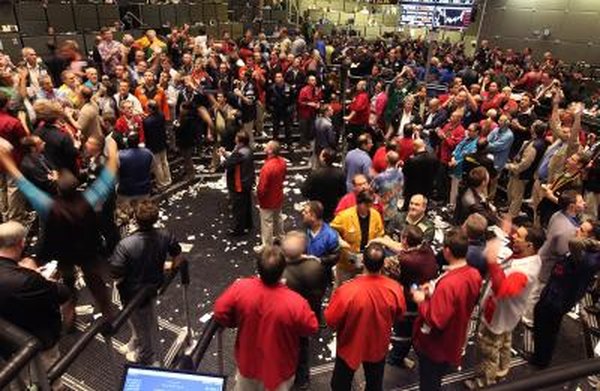The Correlation Between Pre-Market Futures and Daily Close
Traders monitor prices in the Standard & Poor's 500 stock index at the Chicago Board Options Exchange.
Scott Olson/Getty Images News/Getty Images
Between the 4 p.m. close of the New York Stock Exchange and the next day’s opening at 9:30 a.m., futures traders will see the open and close of Asian markets, the bulk of trading in European markets, and any pre-market economic reports issued by governments or other entities. During earnings season, virtually all earnings announcements are made either before or after the cash market. All of these events will provide trading opportunities for futures traders before participants in the cash markets can react.
When Pre-Market Futures Predict the Daily Close
Major economic reports that confirm an existing trend generally result in a sympathetic move in futures and a similar move by the cash market at the open. This will likely hold through the close, as long as nothing occurs during the day to alter conditions. Similarly, major reports that indicate a strong change in conditions will usually cause a reversal in the futures market and a like move in the cash market. Monthly economic reports with the power to move markets include the consumer price index, the Commerce Department's Personal Income and Outlays and the Labor Department's Employment Situation Summary. Also significant are announcements of gross domestic product, which are issued quarterly in two reports, advance and final.
When Pre-Market Futures Do Not Predict the Daily Close
Occasionally, a significant non-financial event results in a dramatic move by futures outside of cash market trading hours. On July 7, 2005, terrorists detonated bombs in the London Underground -- the city's subway system -- during the morning commute, killing 52 people. In the hours that followed, S&P futures moved sharply lower. The cash market opened lower, but it recovered enough to finish the day with a gain. Futures trading volume is much lower during the hours that the cash market is closed, which amplifies the effect of a single large trade. A buy or sell order for 5,000 E-mini S&P contracts might move the futures market by several points during the overnight market, while a similar trade would have much less effect during the day, when hourly volume typically exceeds 100,000 contracts.
The Effect of Volatility
In low-volatility markets with no significant economic reports, S&P futures may only vary from the previous close by a few points. In these cases, the cash market close will be more influenced by large institutions taking profits or adding to positions during normal trading hours. The Federal Reserve releases minutes of the open-market committee eight times annually during normal cash market hours. This is typically followed by a large increase in volatility and a strong move in either direction, depending on the statement issued. On these days, pre-market activity may have little influence on the cash market close.
Lessons for Small Traders
Futures traders have the advantage of a nearly 24-hour-long trading day and the ability to react quickly to news that happens when cash market participants' hands are tied. However, most days don’t offer market-moving economic reports or random non-financial events that have effect on the market. Even when they do, futures traders may overreact. Better information does not always result in better judgment.
References
Resources
Writer Bio
Currently retired, William Tharalson was principal of Castle Peak Trading, a commodity trading advisor registered with the Commodity Futures Trading Commission, and a member of the National Futures Association for 11 years. Tharalson has a bachelor's degree in economics (cum laude) from the University of California, Irvine.

